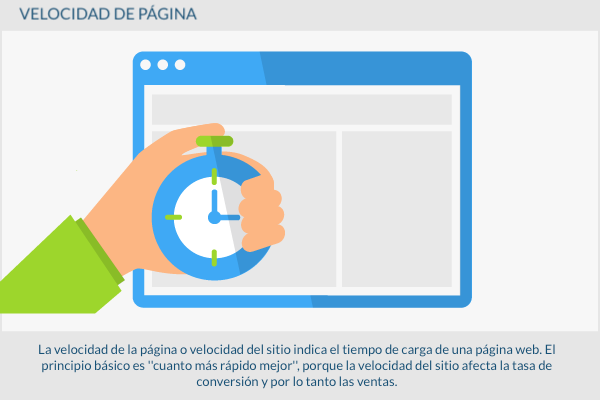The page speed o site speed indicates the loading time of a web page. The basic principle is the faster the better, because the speed of the site affects the conversion rate and thus the sales.
The most common brakes for loading time
Small websites often suffer from problems such as huge images, fragmented JavaScript and sluggish compression or slow databases. However, the large number of different files to be uploaded can also cause long loading times. Every file recovery requires a DNS query and that it takes time.
Google page speed
Google supports webmasters with the page speed tools of the Google Search Console. Page Speed Services allows webmasters to provide their page in Google CDN (Content Delivery Network).
Link between site speed and conversion rate
The conversion rate is an important statistic for e-commerce that can be affected by the speed of the site. The longer a page load time, the more likely customers are to interrupt and buy from another provider. One in four customers will abandon a page load if it takes longer than ten seconds.
E-commerce giant Amazon has calculated that a load time of more than 100 milliseconds will reduce sales by about 1%. Amazon.com's daily turnover is approximately $ 67 million. This represents a lost possibility cost of $ 670,000 per day, which would add up to $ 244.5 million in one year.
In the area of mobile shopping, the bounce rates are even higher. Buyers' 40% will interrupt when trying to buy something when the page is unresponsive within three seconds. The mobile shopping market is still not as strong in Spain as it is in the US, where 79% of users make mobile purchases.
In 2008, the US price comparison site Shopzilla launched a redesign of their site and put a focus on site speed in design. As a result, the conversion rate and page impressions increased by a double-digit percentage.
Importance to search engines
In its web page analysis, Google has included site speed as a ranking factor in the past. In this way, websites with a faster loading time than their competitors were ranked higher. Google explained this by saying that they want to provide the user with the best feasible experience when browsing the web. Site speed as a ranking factor is one of many evaluation factors for the algorithm.
Site speed optimization
Google offers the opportunity to review the speed of the site with its analysis tool. Applicable charts can be found with standard reports in the content area.
Page load times that include many images as content can be reduced through the use of a Content Delivery Network (CDN). At the same time, compressing images to thumbnails can help. Many plug-ins, which are used as part of the impact CMS site speed in addition. WordPress, for example, has extensions available that are not always useful. Through the intensive use of these extensions, the speed of the site could deteriorate.
Web Links
- Google study on page speed
- Page speed explained on SEOmoz.org
- Google's Official Post on web page load times
- ECommerce Analytics Dashboards Speed




